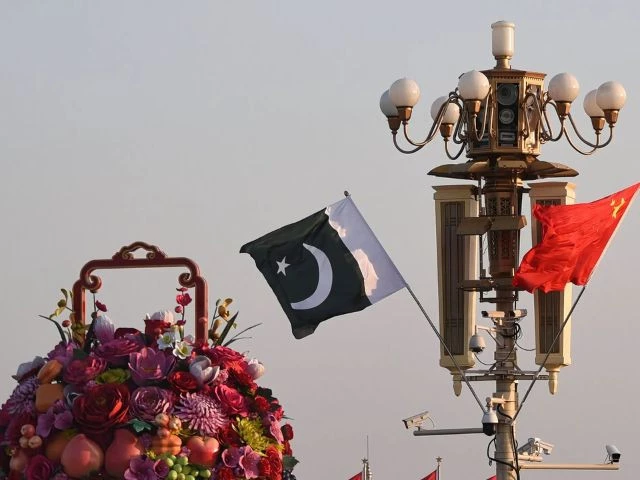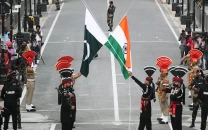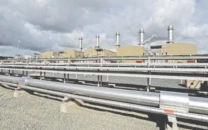74 years of China-Pakistan relations: A historical overview
China-made PL-15E air-to-air missile was also used in the recent airstrikes by PAF on India

This year, China and Pakistan are celebrating their 74th anniversary of diplomatic relations, which were established on May 21, 1951.
Since then, Pakistan and China have had historical ties deeply rooted in mutual trust, shared strategic interests, and support at the regional and global level.
The 1965 Indo-Pakistan war proved to be a real catalyst in cementing these ties, as China fully supported Pakistan. China's image improved exponentially after the war and positively impacted the Pakistani psyche.
For instance, China always supported Pakistan’s stance on Kashmir while Pakistan endorses the “One China Principle” and firmly supports China’s stance on Xinjiang, Xizang, Hong Kong, and the South China Sea.
Since the establishment of diplomatic relations, both countries have also enhanced their economic, defense, and cultural ties.
This is a unique and historic time for Pakistan and China as Pakistan won the battle from India and destroyed the enemy’s six jet fighters, including three Rafale jets, one MiG-29, and one SU-30, by using Chinese-made J-10C fighter jets.
Earlier in 2019, Pakistan shot down an Indian MiG-21 by a JF-17 fighter jet jointly co-developed and manufactured by the Pakistan Aeronautical Complex and the Chinese Chengdu Aircraft Industry Group.
Likewise, China’s made PL-15E air-to-air missile was also used in the recent airstrikes by Pakistan’s Air Force (PAF) on India, as per media reports.
The recent military combat between the PAF and the Indian Air Force (IAF) has drawn the attention of the whole world towards the effectiveness and accuracy of Chinese weaponry, including fighter aircraft and air defense missiles.
The military experts on international media are discussing the war arms credibility of China and the capability of the use of these weapons by Pakistan’s forces in a short-term military encounter between the two neighbors and traditional rivals.
Resultantly, the market of the Chinese Aircraft manufacturers goes up, and according to Bloomberg, Chengdu Aircraft Corporation’s market value rose by more than 55 billion yuan, over a quarter increase, underscoring investor confidence in the jet’s perceived battlefield effectiveness.
The year 2025 should be celebrated as a year of strong defense ties between China and Pakistan. The 74th anniversary is significant for two aspects for both brotherly countries.
For Pakistan, it has won the battle against India by using Chinese fighter jets and missiles, and for China, the military weaponry emerged as the most credible fighting arms compared with the western-made.
This is the second time when Chinese military weapons were used by Pakistan against Indian aggression, and it has successfully passed the test, and now it is also a pride for China that the world is discussing the significance of the Chinese-made defense arms.
As a result of the recent conflict, both the Chinese and the Pakistani nations came closer, and it is being felt that both are holding each other's hands and protecting sovereignty, territorial integrity, strategic interest, and moving towards further strengthening a strong bilateral relationship.
This expression can be witnessed on social media platforms, including Facebook, X, TikTok in Pakistan, while on Weibo and WeChat in China.
The conflict between India and Pakistan is over now, and this is high time for Pakistan to look into the internal security affairs, particularly in Balochistan, and launch an operation against the terrorist outfit Balochistan Liberation Army.
The elimination of the BLA from Balochistan would provide an opportunity for the smooth functioning of the China-Pakistan Economic Corridor and ensure further Chinese investments in Pakistan.
The Chinese investors are ready to bring their investments to Pakistan, but the issue of security is the main obstacle and which must be sorted out as a top priority.
The CPEC has become a rare window of opportunity for Pakistan's economic development, and the total investment volume is estimated now at around $62 billion and of out if it $25 billion has already been spent on multiple energy and infrastructure projects.
Thus, Pakistan should provide foolproof security to Chinese workers and a safe environment for timely investments and completion of the projects under the CPEC.
In addition to this, China should also enhance cooperation with Pakistan by providing advanced technology and security equipment for surveillance to implement Pakistan’s “neighborhood watch strategy” to prevent insurgents from disrupting CPEC projects.
As China has always supported Pakistan in combating terrorism and maintaining regional stability.
In my view, an economically strong Pakistan is a guarantee for regional peace and stability; any opposition to the CPEC thus evokes negative vibes in Pakistan.
Over time, the China-Pakistan relationship has deepened further, and both countries have enhanced defense and economic cooperation.
With the implementation of the CPEC projects, deepening cultural and educational links and unprecedented military collaboration, the friendship would be further strengthened in the upcoming years.
The writer is a senior journalist, former fellow of ICFJ, and PhD from Tsinghua University.

























COMMENTS (1)
Comments are moderated and generally will be posted if they are on-topic and not abusive.
For more information, please see our Comments FAQ